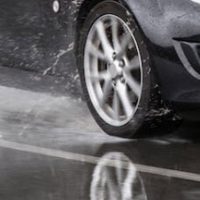Driving In The Rain

If you drive regularly in Florida, you probably know that avoiding wet road conditions is nearly impossible. Rain can cause a driver to lose control of a vehicle, can reduce visibility, and can generally make it more likely that a person will be involved in a car accident. This makes it especially important for Florida residents to use extra caution when driving this rainy season.
Rain Contributes to Car Accidents
According to the Department of Transportation, around 75 percent of weather-related car accidents occur on wet pavement, while 47 percent happen during rainstorms. Approximately 544,700 people sustain injuries in crashes that take place on the former, while around 357,300 people are injured in crashes during rainfall. Tragically, as many as 3,400 of those individuals will lose their lives. Finally, rain contributes to as many as ten percent of all car accidents in the U.S.
Tips for Driving Safely in the Rain
It’s important for Florida residents, who experience a lot of rainy weather during the summer, to be familiar with the risks of rain and car crashes. To avoid accidents caused by the weather, motorists should consider taking the following steps before they even get into their cars:
- Checking their vehicle’s headlights, tire treads, taillights, and turn signals;
- Replacing worn windshield wipers to improve visibility; and
- Planning their route in advance.
Once driving, when rain is expected, drivers should:
- Follow the speed limits carefully;
- Avoid using cruise control, which can cause a driver to lose control of the car;
- Leave extra space between their car and other vehicles (a minimum of five seconds);
- Avoid sudden movements or hard braking; and
- Ensure optimum visibility by keeping their headlights on and using their car’s windshield wipers, and if necessary, the rear and front defrosters.
Some of these actions are actually legally required under state law. For instance, in Florida, drivers are obligated to use their headlights when it’s raining. They are even permitted to use their hazard lights in certain circumstances. Finally, Florida drivers should be sure that they are familiar with how to manage a skid. To do so, motorists should try to steer in the direction they want to travel and to avoid slamming on the brakes, which can cause the car to hydroplane, or lose contact with the road. When hydroplaning, a driver should remove his or her foot from the accelerator slowly and then continue steering in the direction the car was traveling.
Reach Out to Our Experienced Florida Car Accident Attorneys
A reckless or negligent driver cannot escape liability for an accident just because it was raining at the time of the crash. This is because drivers are required to use reasonable care in all situations when on the road. When it’s raining, this means driving more slowly and turning on one’s headlights and wipers. If you were hurt in an accident because a driver failed to take adequate precautions while it was raining, call Boone & Davis at 954-566-9919 and set up a meeting with one of our dedicated Florida car accident lawyers today.
Sources:
ops.fhwa.dot.gov/weather/weather_events/rain_flooding.htm
ops.fhwa.dot.gov/weather/q1_roadimpact.htm
